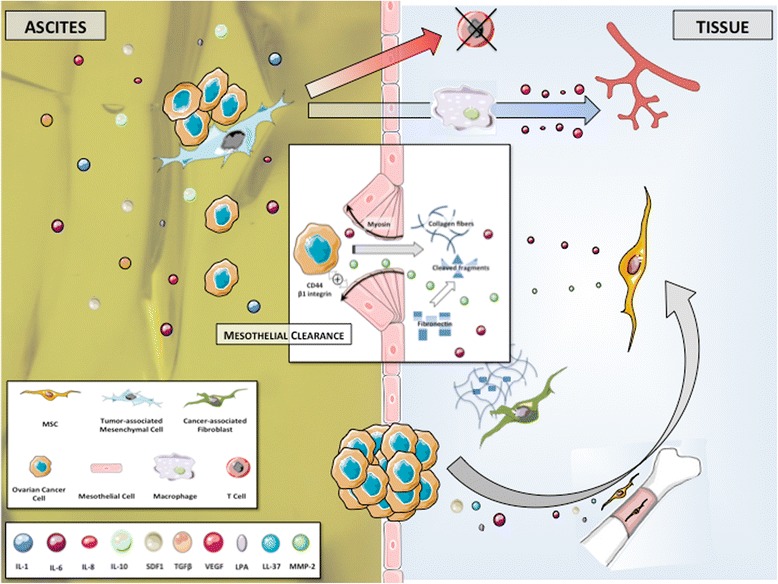Figure 4.

Early steps in peritoneal infiltration. Tumor-associated Mesenchymal Cells (TAMCs) constitute a protective niche for ascitic Ovarian Cancer Cells (OCCs) through their inhibition of anti-cancer T cells. They also participate in angiogenesis at metastatic sites by inducing macrophages production of pro-angiogenic cytokines including IL-6, IL-8 and VEGF. Ascitic OCCs may be the primary source of peritoneal metastases. The initiation of peritoneal invasion relies on the ability of OCCs to attach to and to clear the mesothelial cells that constitute the peritoneum. This mesothelial clearance involves integrin- and talin-dependent activation of myosin and allows OCCs to get access to the basement membrane. Bone marrow-derived Mesenchymal Stem Cells (MSCs) are recruited at metastatic sites and favor the infiltration process with the release of secreted factors such as IL-6 and MMP-2. The metalloprotease MMP-2 is also up regulated in OCCs upon binding to mesothelium and leads to improved attachment of tumor cells by modifying the extracellular matrix.
